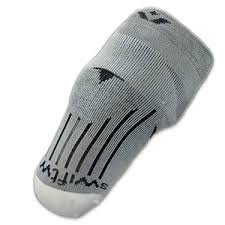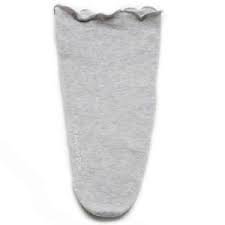Managing sweat in the Warmer months
With the beginning of Summer and having already experienced a few days of extreme heat, it’s a good time to recall some of the advice or techniques used to help manage perspiration (sweat) when using a prosthesis.
After limb loss, the body has lost a significant skin surface area which previously was used to help regulate temperature. Using a prosthesis means the residual limb is now covered by multiple layers – the silicone/gel liner, socks and the socket. Furthermore, walking with a prosthesis requires more energy than for able-bodied counterparts. These factors combine to result in making prosthetic users prone to excess perspiration.
This topic is important because high ambient and skin temperatures with profuse sweating can lead to increased likelihood of skin breakdown, heat rashes or fungal infections.
Skin breakdowns can occur due to increased movement between the residual limb and the socket, which commonly occurs due to a build-up of sweat. Fungal infections are common on the skin and occur regularly in areas that are damp and warm (eg. Athlete’s foot), and this includes the residual limb under the prosthesis. Fungal spores are also likely to live on socks or silicone liners and so hygiene is extra important during the warm weather.
Some Common Recommendations
If the hot weather and sweating is becoming a problem for you, please feel free to make an appointment to discuss your options as our advice is best catered for the individual, however some common recommendations we can provide are:
Anti-perspirant treatment
Extra strength treatments can be obtained from a pharmacy without the need for prescription, or prosthetic use antiperspirants can be obtained from your Prosthetist. Some require the spray or roll-on to be applied on at night, ahead of an expected hot day. Be aware that some skin will be sensitive to antiperspirant, so always test a small section of skin before applying to the whole residual limb
Moisture wicking socks
Some socks have been specifically designed to be worn against the skin, and underneath silicone/gel liners. These socks do not prevent sweating but help to wick away moisture and keep the skin dry. They are popular for below-knee amputees and can work with above-knees however they sometimes reduce the adhesion between the silicone/gel liner and your skin, resulting in excessive movement which can lead to its own problems (or the problem it attempts to correct- excessive movement).
These should be used after discussing with your prosthetist.



Nursing pads
These absorbent pads can be worn on the end of your residual limb with the liner rolled on over the top keeping it in place. The pads absorb sweat and can prevent a pool of sweat under the liner. These can be an option for those who are unable to use the moisture wicking socks, as the pads generally do not impact on the fit of the silicone/gel liner
Silcone/gel liner review (size, type)
Most of you probably wear a silicone or gel liner. There are a number of different types and some may provide you with relief from heat and sweating when compared to another. Most importantly, a liner should be well fitting – which your Prosthetist can check for you. A loose-fitting liner will result in more sweating, more pooling of sweat and more skin irritation.
Remember also to clean your liner daily, and sometimes twice per day in hot weather. This will help keep bacterial or fungal infection away.
Self-management techniques
Good hygiene, being prepared (carrying spare socks, towel, sprays etc), choosing appropriate activities for the temperature, frequent breaks from using the prosthesis (where possible) and regular monitoring of your skin will all help you stay out of trouble this Summer. Please try to develop a habit of making sure you are looking after yourself, your residual limb and your prosthesis.
Medical referral
For some people, sweating remains an issue despite best efforts to manage it. A review with your local doctor, or our Rehabilitation Consultant could help discuss other options. For example, Botox injections and laser hair removal have been used to help relieve sweating and issues associated.



